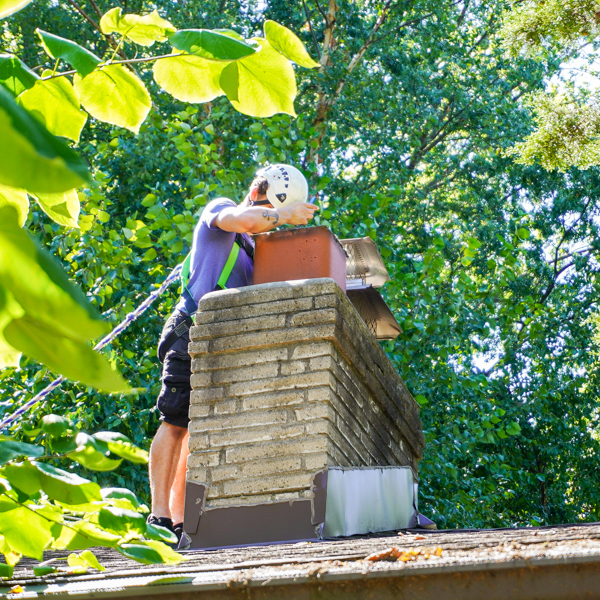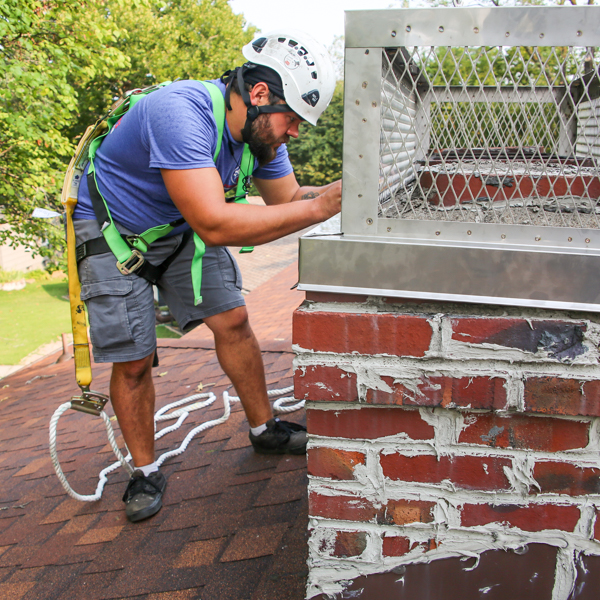Risks in Neglecting to Have Your Chimney & Fireplace Inspected
There are places in your home where you can “cut corners” and come out all right. Your chimney/fireplace system isn’t one of those areas. Regular inspections performed by a licensed professional are critical in keeping your chimney and fireplace working safely and efficiently. Neglecting these inspections could result in huge repair bills and possibly risk to everyone who lives in your home.
 What a chimney inspector does
What a chimney inspector does
Most licensed chimney inspectors perform three different types of inspections as described by the Chimney Safety Institute of America (CSIA):
Level 1 chimney inspection
This is the basic inspection that covers all visible areas of your chimney/fireplace system. Your inspector will alert you to damage or malfunction that needs to be addressed to prevent more serious problems down the line.
Level 2 chimney inspection
These inspections involve video imaging technology and are performed in the following three scenarios:
- When the home is being sold
- During a system alteration, such as adding a new chimney liner or replacing a wood-burning fireplace with a gas unit
- When a chimney fire, lightning strike or other event is thought to have caused some kind of damage
Level 3 chimney inspection
A Level 3 inspection is called for when significant damage is known to exist. It typically involves the removal of parts of the chimney structure and/or adjacent home building materials.
Common chimney problems found by inspectors
While you can spot certain chimney and fireplace issues, a trained chimney inspector is able to see things you can’t. Additionally, the inspector can determine the cause and extent of the problem, which isn’t easy for most homeowners to do.
Here are some common chimney problems inspectors find.
Flue obstructions
If you operate your chimney without a chimney cap, your flue is open to falling debris from trees and the nests of small animals such as birds and squirrels. These obstructions narrow the flue passage and can cause smoke and deadly carbon monoxide to back up in to your home.
Excess creosote
Creosote is a byproduct of wood combustion and is added to your chimney flue every time you use the fireplace. Creosote can worsen an existing obstruction, but more critically, it can ignite into a chimney fire. The more creosote, the more potential for a devastating fire.
Compromised masonry
Chimney inspectors look closely at a chimney’s masonry. They’re checking for cracks in the bricks and crumbling sections of mortar, both of which will allow water to intrude and begin a cycle of extensive damage. Severe compromises in the masonry can lead to a leaning or collapsed chimney, costing you more money.
 Chimney cap, crown and flashing damage
Chimney cap, crown and flashing damage
Chimney caps protect the top of the chimney from rain and debris. Chimney crowns cover the interior chimney spaces minus the flue openings. Chimney flashing seals the gap between your chimney and roof. If there are problems with any of these components, serious leaks and water damage likely will be on the way.
Chimney inspectors will spot these and other issues and give you recommendations on how to repair them. Many inspectors provide repair work for fireplaces and chimneys as well as chimney cleaning services.
Fluesbrothers Chimney & Fireplace of Kansas City, KS, is ready to help with licensed chimney inspections, fireplace inspections, chimney sweeping and all types of repairs throughout your chimney/fireplace system.
Speak with a chimney professional today at (913) 236-7141.
The post Risks in Neglecting to Have Your Chimney & Fireplace Inspected appeared first on Fluesbrothers Chimney Service.